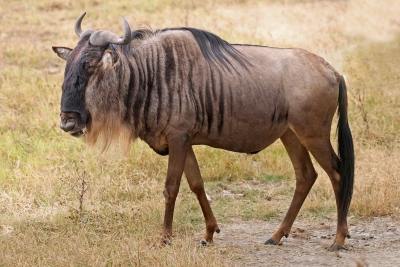
Deep in the lower expanses of Africa, spanning across thousands of square kilometres in north Tanzania, are vast grasslands called the Serengeti. These endless plains are dominated by the blue wildebeest. The wildebeest is a large antelope that belongs to the family Bovidae. It has a cow-shaped head with a pointy beard, and strong curved horns. Its coat has a silver blue shine which gives it the ‘blue’ in its name.
The blue wildebeest is responsible for the largest migration in the history of the animal kingdom. The ‘Great Migration’ as it is called, involves an 800-kilometre trek of 1.5 million wildebeest across the Serengeti in search of greener pastures and water sources.
The wildebeest is joined by hundreds of thousands of zebras, gazelles and other animals in the ‘Serengeti Migration’, which is listed as one of the seven natural wonders of Africa! However, not so long ago, the wildebeest population in the Serengeti was in danger of extinction. This also threatened the Serengeti ecosystem which depends on this migration for its effective functioning as a carbon sink. The wildebeest consumes excessive vegetation which would otherwise dry up and catch fire in the summer, leading to the release of huge amounts of carbon dioxide into the atmosphere.
Thanks to the collaborative efforts of wildlife groups, the wildebeest was brought back from the brink of extinction and now numbers about 1.5 million in Tanzania. It is listed under ‘Least Concern’ in the IUCN Red List.
Picture Credit : Google




